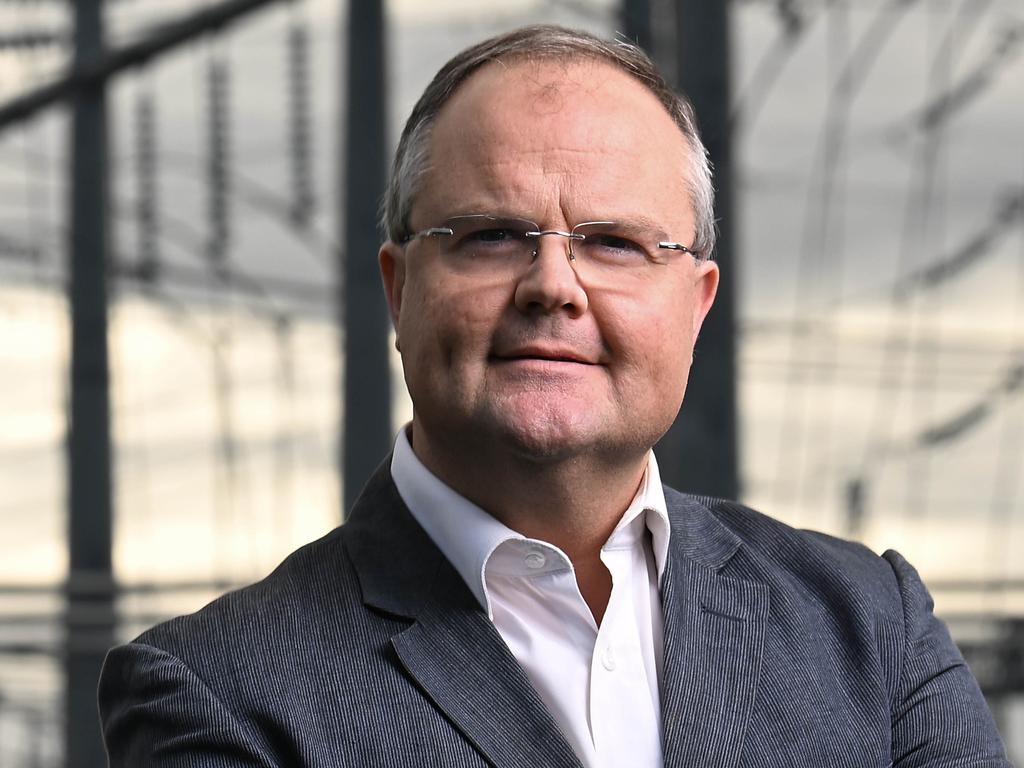Market operator sounds gas warning at emergency industry meeting
Australia has been plunged into a fresh energy crisis amid warnings of gas shortages along the eastern seaboard after supply disruptions and a winter cold snap triggered a run on reserves.

Business
Don't miss out on the headlines from Business. Followed categories will be added to My News.
Australia has been plunged into a fresh energy crisis amid warnings of gas shortages along the eastern seaboard after supply disruptions and a winter cold snap triggered a run on reserves, raising fears of manufacturing shutdowns if supplies are curtailed.
As revealed by The Australian, an emergency phone hook-up was convened on Thursday, with the national energy market operator telling gas companies the southern states were now dependent on supplies being sent from Queensland for the rest of winter.
The meeting was held after a “threat notice” was sent to the gas industry, warning that the market had tightened substantially amid supply disruptions from a major source in Victoria that had caused a depletion of reserves.
The energy shock came a day after the Coalition announced plans to build Australia’s first nuclear power plants by 2035, sparking concerns in the energy industry over the lack of costing and the nationalisation of coal power plants under the blueprint.
In a notice that the Australian Energy Market Operator sent on Wednesday night, it said: “The supply of gas in all or part of the east coast gas system may be inadequate to meet demand.”
Sources said the market operator then convened a meeting of industry at 1pm on Thursday, at which it left open the option of intervention, revealing it would contact power station owners with the potential to cut back their supplies. It added that the pipeline south from Queensland was running at full capacity, with those volumes likely to act as a lifeline for users in southern states until September.
The group representing major gas transmission owners blamed the emergency situation on governments failing to act on desperate pleas from industry.
Australian Pipelines and Gas Association chief executive Steve Davies said: “For half a decade, industry has been warning about looming gas supply shortfalls. Little has been done to remedy it. The opposite has occurred, and businesses are being asked to pay the price.”
Mr Davies said poor generation from large-scale renewables had also exacerbated the supply crisis.
“The extreme lows in renewable generation, particularly wind yields, have meant gas-powered generation has picked up a significantly larger load to keep the lights on and ensure electric homes can remain heated,” he said.
The APGA estimated in the first three weeks of June that gas-powered generation in Victoria has already been used as much as for the entire winter last year.
The market operator warned in March that gas generators might be forced to burn diesel to keep the power grid running after authorities revealed states faced a catastrophic supply shortfall from next year unless new sources of supply were developed.
The gas shortage is politically sensitive for the federal Labor government, although a spokeswoman for Energy Minster Chris Bowen said the alarm was precautionary rather than indicative of an imminent crisis.
“Today’s notice is about a potential risk, not a risk that has eventuated,” the spokeswoman said. “AEMO and the market are taking steps to ensure the risk is mitigated ahead of time,” she added.
AEMO said the situation was triggered by extra demand amid a cold snap. Victoria and NSW endured their coldest day of the year on Wednesday, which caused a spike in demand for heating.
Gas is predominantly used for residential heating in Victoria, but spikes in electricity demand will cause increased pull for gas across the national electricity market.
Australian Energy Producers chief executive Samantha McCulloch said urgent action on gas was long overdue.
“Australia has abundant gas reserves but needs the political will to restore investment confidence and ensure timely approvals for much-needed new gas supply,” she said.
“Regulatory certainty and stability (are) critical to support investment in the next generation of gas supply, all the way from exploration to production.”
The gas shortage was partly caused by ExxonMobil’s Longford facility in Victoria – a dominant supplier of gas to the east coast – experiencing a partial disruption. ExxonMobil said the reduced supplies were a consequence of planned maintenance on its Marlin offshore complex.
The company said it had restored gas production from the facility and would ramp up production over coming days.
Analysts estimated Longford was producing about 75 per cent of its typical output. Exxon has told AEMO it expects disruptions to continue until July 1.
Woodside said it had bolstered supplies. “We are working with the operator to maximise gas production from the Gippsland Basin Joint Venture, and offering all available volumes to market,” a spokesperson said.
Energy Edge managing director Josh Stabler said slightly warmer temperatures would help alleviate pressure but the situation would become particularly dangerous later in winter if there continued to be supply issues to the east coast and there was further cold weather. Other industry sources said they expected an improvement within a week.
Australia’s ageing coal power stations are experiencing a spate of small outages, which have constrained electricity generation. Australia’s renewable energy generation is also likely to pick up soon. Victoria has for much of 2024 seen reduced wind supplies. amid unseasonable weather.
As gas supplies run low, the cost of gas-powered electricity will soar. The wholesale cost of electricity is not immediately passed to households and businesses, but drives up subsequent prices when tariffs are reset. The next annual tariff will be set next year to begin on July 1, 2025.
More Coverage
Originally published as Market operator sounds gas warning at emergency industry meeting




